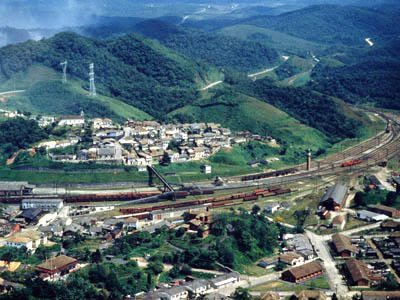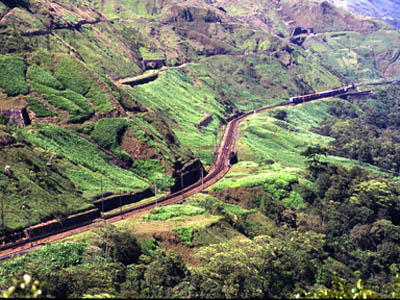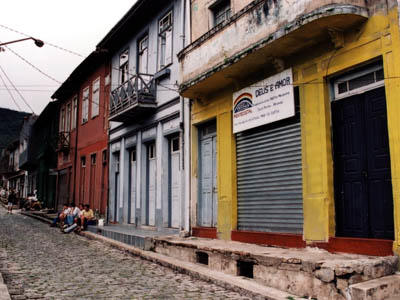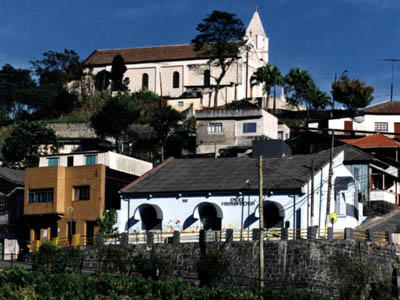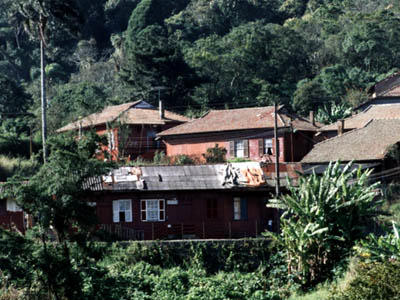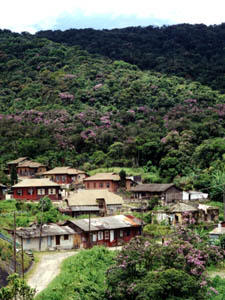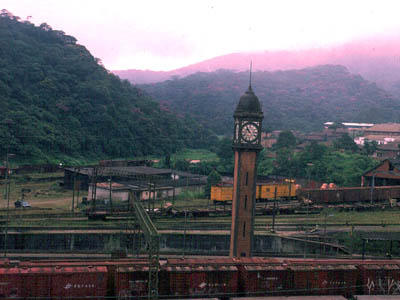In the mid-nineteenth century, the Saõ Paulo Railway Company laid a snaking network of tracks over Brazil’s green mountains. In order to transport coffee beans from inland plantations to the port of Santos on the south coast, a railroad funicular was incorporated that could lift entire trains full of cargo over the undulating terrain. A British company provided the steam engines that drove the operation and also founded a workers’ village on the highest point in the area, called Paranapiacaba, meaning “a place to view the sea” in Tupi-Guarani. The small houses for railway and funicular employees were constructed from wood, in a style similar to those of British mining towns. Paranapiacaba’s
civic buildings and larger homes were Victorian in design, and its train station was adorned with a clock tower in imitation of London’s Big Ben. The village thrived for 30 years before the introduction of automated machinery undermined the effectiveness of the labor-intensive funicular. Paranapiacaba’s population dispersed and its buildings were abandoned by all but a few, left to deteriorate on the hillsides.
2000 and 2002 World Monuments Watch
The government of Brazil declared Paranapiacaba a registered historic district and began initiatives to preserve it, aiming to invite tourism and eventually repopulate the town as a suburb of Saõ Paulo. At the time, the few residents had neither the money nor the expertise to repair their wooden homes because that method of construction was so unusual in South America’s tropical climate. WMF placed Paranapiacaba on the Watch list in 2000 and 2002 to raise awareness of the government’s efforts. Interested parties from Saõ Paulo and Santo André suggested transforming the area into a heritage park, and their plan was approved by the owner of the land, the Brazilian Federal Railroad Network. Together, this group and the government produced a plan for sustainable development of Paranapiacaba. WMF helped them implement several of their projects and provided funding for the site. By 2008 the conservation team had restored Casa Fox (the Archive), the Castelinho (now a museum), the Lyra Serrano Club, and the Old Marquet, and the town continues to recover.
Brazil’s architectural legacy was indeed affected strongly by its Portuguese colonizers, but international exchange continued even after the country declared independence in 1821. The British expatriate community of Paranapiacaba incorporated their history and traditions into the village. The structures standing today bear witness to that phase of growth and the effect of foreign industry. When conservation began at Paranapiacaba, the town had deteriorated to such a degree that it could not provide for the basic needs of its few residents. Ramshackle homes had been erected and unstable additions had been made to the original wooden buildings. Paranapiacaba was in danger of becoming a slum and dragging its inhabitants into extreme poverty. Because of the increased attention and commitment, conditions have improved dramatically. The Brazilian government, WMF, and others seek to further the preservation effort with a twofold goal: to care for the natural, cultural, and industrial heritage of Paranapiacaba and to promote economic revival in the region.

